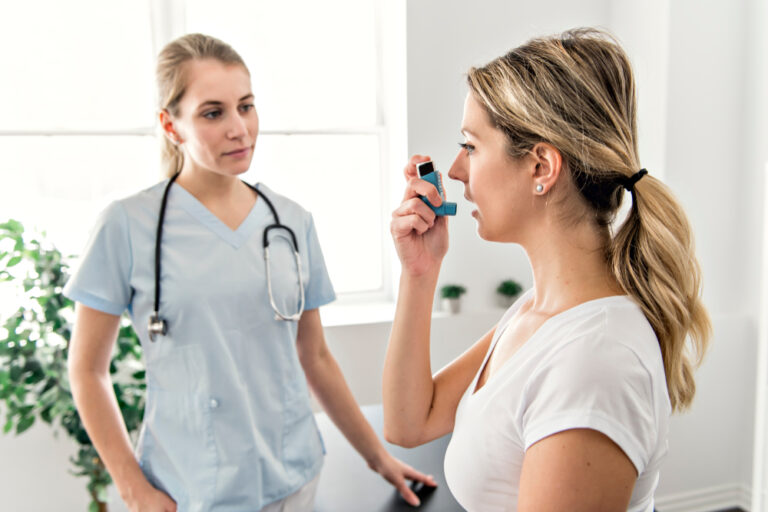by Annabel Cooper
No matter how disciplined you are about taking your asthma medication and avoiding your triggers, you can still be struck by an asthma attack.
An asthma attack happens when your airway lining starts to swell, the muscles tighten and mucous is secreted. Asthma attacks are often associated with viral infections such as the common cold and flu.
When this happens, it can be terrifying, which is why it is so important to have a completed Asthma Action Plan. Not only will doctors have immediate access to all your asthma information, but it means you will likely recognise the signs of an attack straight away, know what to do and therefore won’t panic. Panicking makes an attack worse.
What happens when asthma attacks and what should you do?
Nurses Liz Boden and Tracy Nash of asthma charity, Open Airways, explained the signs, symptoms and immediate actions to take… as well as what not to do.
Signs you are having an asthma attack are:
- Incessant coughing and a quick reliever inhaler isn’t helpful
- Wheezing
- Shortness of breath
- Tightness in the chest
When this happens, you must do the following:
- Sit upright and loosen any tight clothing around the neck.
- Take 4 separate puffs of your emergency or reliever inhaler, which is usually the blue one.
- The most effective way to do this is to shake the inhaler, put one puff into a spacer then take four long deep breaths in and out keeping the spacer in your mouth. Repeat until four puffs have been taken.
- Alternatively, for adults and children over 12 years old, take two separate doses of a Symbicort combination inhaler.
- Wait four minutes. If there is no improvement, repeat the four puffs in step 2 or take one more dose of the Symbicort inhaler.
- If there is still no improvement, it’s time to call your doctor or go to the hospital emergency room.
- Continue to take your reliever inhaler on the way to the hospital.
If you are suffering from a severe asthma attack, however, don’t wait. Call 911 immediately.
Signs of a severe asthma attack are:
- Distress
- Lips or finger tips turning blue
- You have trouble talking and finishing sentences
- Your reliever inhaler is not working
In an emergency, never use Dulera (blue), Seretide (purple), Becotide (brown) or Flixotide (orange) inhalers. These are preventative inhalers and will not help when you are having an asthma attack.

